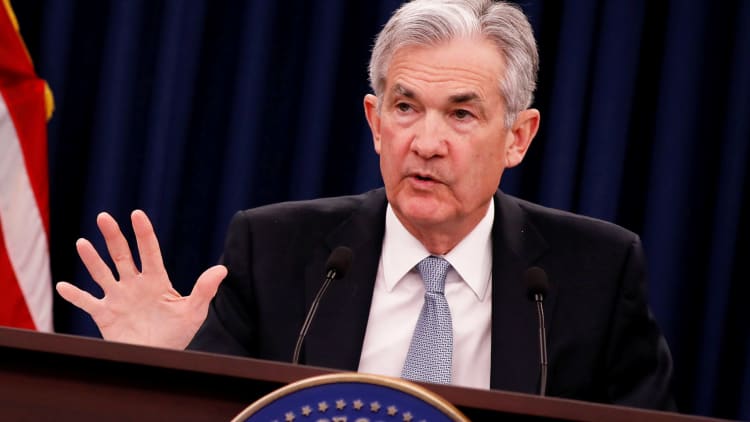
Federal Reserve officials at their most recent meeting saw an economy growing at a strong pace and inflation moving up as well, justifying continued interest rate increases.
Minutes from the March gathering of the Federal Open Market Committee showed central bankers largely hopeful about the direction in which the economy was headed, though with a few misgivings.
The meeting summary noted that "all participants" expected both the economy to strengthen and inflation to rise "in coming months." The general sentiment likely fuels belief that the Fed will continue on its path of rate hikes.
"Participants generally saw the news on spending and the labor market over the past few quarters as being consistent with continued above-trend growth and a further strengthening in labor markets," the meeting summary said.
The FOMC unanimously voted to approve a quarter-point rate hike, bringing the target range to 1.5 percent to 1.75 percent. There were some misgivings, mostly from "a couple" members who thought it would be better to wait for more evidence that inflation was progressing toward the Fed's 2 percent goal.
"With regard to the medium-term outlook for monetary policy, all participants saw some further firming of the stance of monetary policy as likely to be warranted," the summary said. "Almost all participants agreed that it remained appropriate to follow a gradual approach to raising the target range for the federal funds rate."
Markets expect the Fed to hike rates again in June and likely in September, though a fourth 2018 increase has just about a 1 in 4 chance, according to fed funds futures data.
No longer 'accommodative'?
Members contemplated a language change for future statements in which the stance of monetary policy would move from "accommodative," which has been a standing description since the crisis-era policies were implemented, to "neutral or restraining." The change, if implemented, would reflect a shift in policy from boosting growth to trying to control it.
Along with the rate hike came upward revisions to the committee's expectations for GDP, which it now sees at 2.7 percent in 2018 and 2.4 percent in 2019, both considerably above the post-recession average. In December, the respective forecasts were for 2.5 percent and 2.1 percent gains.
There was optimism across the board, with officials seeing solid gains in industrial production as well as manufacturing and services during the first part of the year. Some areas of slowness, such as consumer spending, were expected to pass due to transitory reasons.
In addition, committee members again expressed belief that the late-2017 tax cuts, valued at about $1.5 trillion, combined with the $1.3 trillion omnibus spending bill, would provide a boost.
"Tax changes enacted late last year and the recent federal budget agreement, taken together, were expected to provide a significant boost to output over the next few years," the minutes said, while noting that some members were unsure of the magnitude of benefits considering the stimulus came at a time when the economy already was running hot.
Trade war comments
One exception to the optimism came from the threat of a trade war.
The U.S. and China have conducted a back-and-forth volley of tariff threats, and the prospect of it escalating has been wearing on the American business and investing communities.
"Participants did not see the steel and aluminum tariffs, by themselves, as likely to have a significant effect on the national economic outlook, but a strong majority of participants viewed the prospect of retaliatory trade actions by other countries, as well as other issues and uncertainties associated with trade policies, as downside risks for the U.S. economy," the minutes stated.
Members, however, judged that even with the trade uncertainty, most other signs in the economy looked solid.
They saw the labor market continuing to strengthen, and reported that there were areas that reported pay gains, though wage inflation remained fairly muted.
Generally speaking, members said they expect inflation to rise to the Fed's 2 percent target. They particularly expected March's year-over-year numbers to be strong, given that an unexpected decline in prices for cellphone service held back inflation in the early part of 2017.
The consumer price index saw headline inflation up 2.4 percent in March, the highest pace in a year, while the core reading that excludes food and energy prices was up 2.1 percent, the highest since February 2017. The CPI data were released Wednesday.



